Motorcycle Investor mag
Subscribe to our free email news
Ducati 916
A bike that defined an era
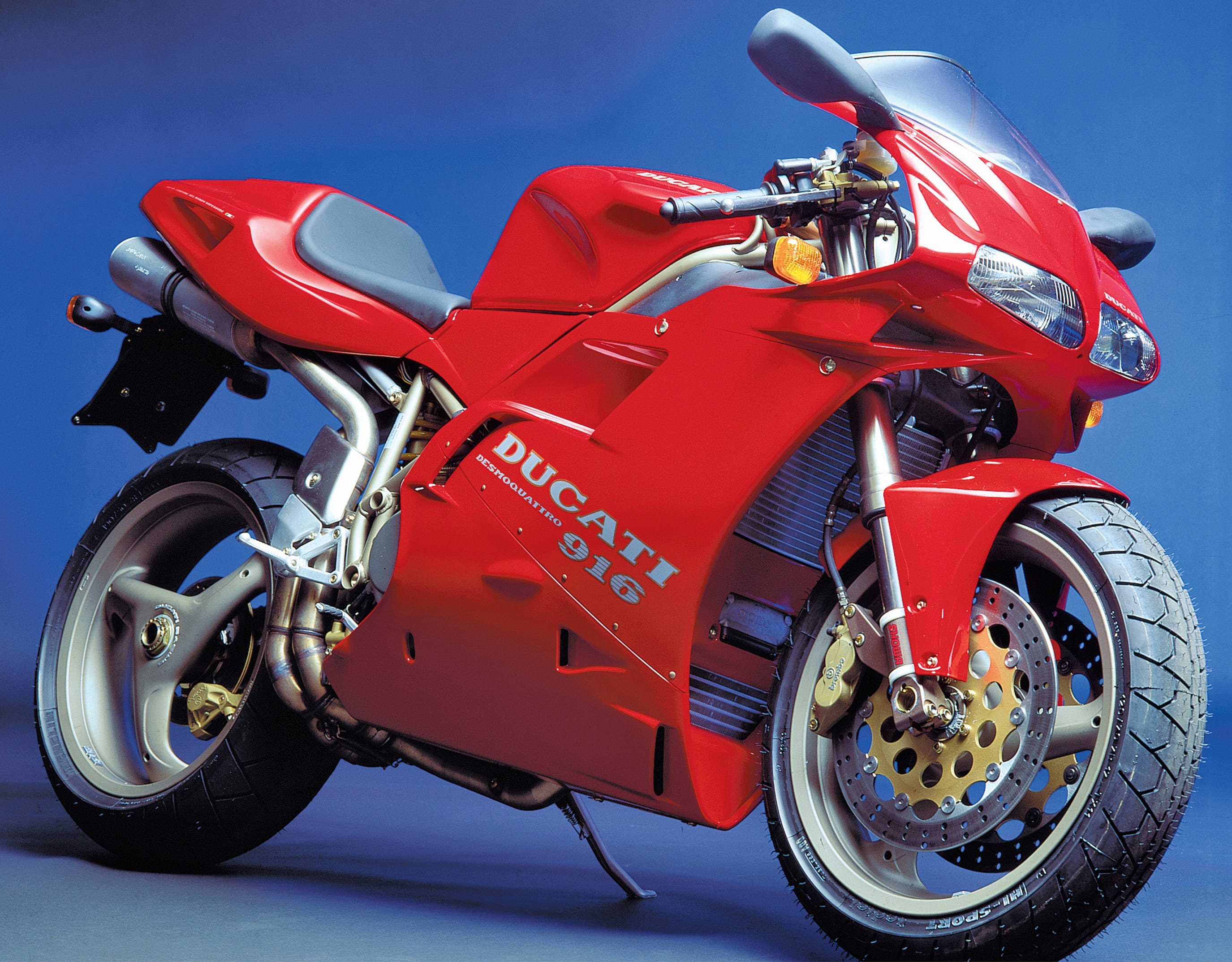
Author
Ian Falloon looks back at his very early
encounters with the Ducati that would redefine
the marque – the 916
(April 2024)
Note: this is from Ian's Substack subscription
service – find it here.
As
it
is now thirty years since Ducati released the 916 it’s
appropriate to have a
look at this bike and assess its general significance
within Ducati’s
historical landscape. Throughout the 1990s I was a
regular visitor to the
Ducati factory at Borgo Panigale, and during one of
these visits managed to
view and photograph the prototype 916. While visiting my
good friend Maurizio
“Mr Pompone” Bavaresco at the Bikers’ Restaurant near
Monte Grappa in September
1993, Maurizio suggested we ride down to Bologna. A
friend of his at the
factory said there was something we should see.
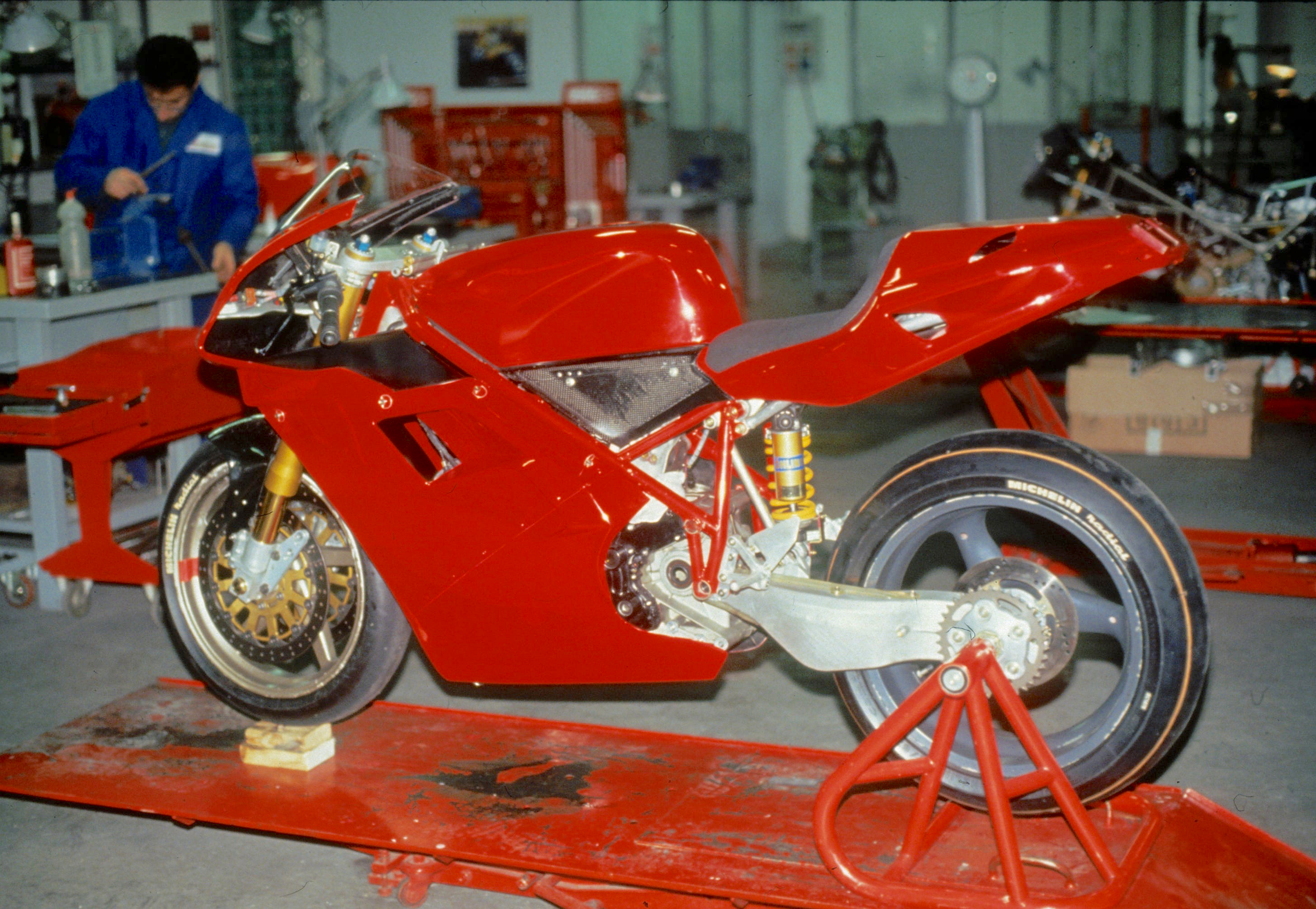
The
ride
with Maurizio’s group was nearly as memorable as the
visit, with no care
taken to observe speed limits and the traffic in small
Italian towns
miraculously clearing to provide a path for half a dozen
speeding motorcycles.
On our arrival at Borgo Panigale Massimo Bordi agreed to
a private viewing of
the 916. It was set up in a special room in preparation
for the release at the
Milan Show. In the meantime Bordi said, “no photos
please”, but later one of
the employees who was mates with Maurizio let us in a
back door. I took the
photos and sent the roll of Kodachrome film airmail to
Ken Wootton
at Australian Motorcycle News. It
appeared on the cover a few weeks
later with the title “World Scoop Photos".

Although
the
916 looked revolutionary with its strong frontal aspect
of twin
poly-ellipsoidal headlights, single-sided swingarm, and
exhaust system exiting
under the seat, it still represented Ducati’s
traditional philosophy of
evolution. At the heart of the 916 was the Desmoquattro
90-degree V-twin, born
in 1987 as a 748 before growing to 851 and 888c. The 851
and 888 were great
Superbike racers but flawed production bikes.
When
Massimo
Tamburini set about designing the 916 at the Cagiva
Research Centre in
San Marino he was determined his baby would be
faultless. So while the 916
engine was essentially a stroked 888, with the same
liquid-cooled double
overhead camshaft cylinder heads and Marelli electronic
fuel injection, the
rest of the motorcycle was new. Serious consideration
was given to the
twin-spar deltabox aluminium frame then becoming
popular, however tradition won
and Tamburini eventually eschewed this in preference to
the Ducati space frame.
Tamburini
embarked
on the 916 design during 1988. This lasted almost six
years and was
codenamed the 2887 project. Work on the geometrical
aspect of the 916 frame
took place over a two-year period even before the
construction of a prototype.
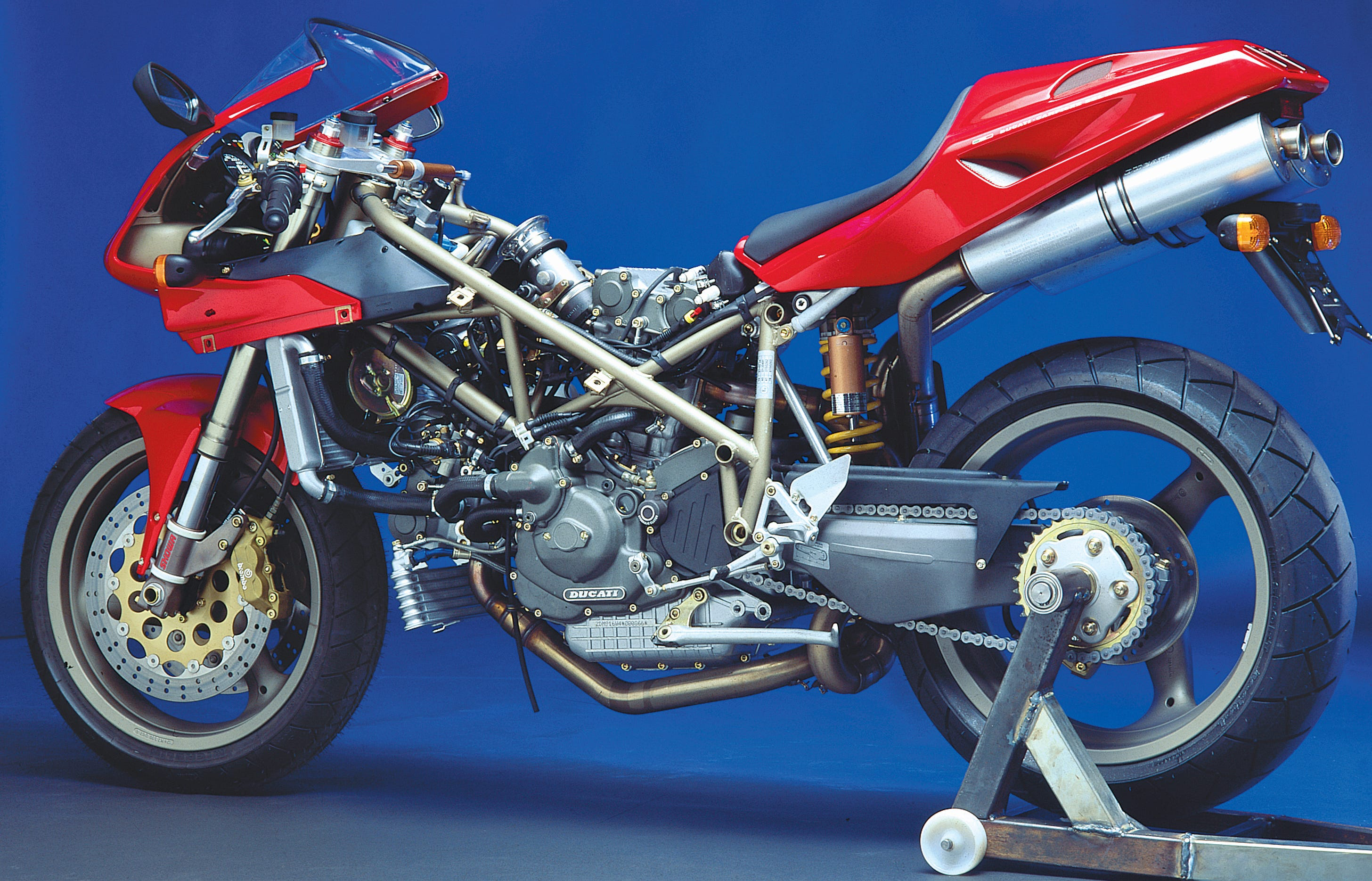
From
Ducati’s
racing experience with the 851 and 888, the requirements
for the 916
included a reduction in the wheelbase from the 888, yet
provide as close to
50/50 weight distribution as possible, along with
adequate wheel travel. This
meant placing the front wheel as close to the engine as
possible and the engine
was rotated forward 1.5 degrees to help the front tyre
clear the cylinder head.
Tamburini was also intent on creating an extremely
strong steering head
structure, with an 80mm in outer diameter, with special
bearings to allow for a
thick (35mm) steering tube. An important element in the
design was the
incorporation of adjustable caster without altering the
wheelbase. The
definitive frame configuration was completed in January
1992, an important structural
component being the sealed airbox with the lower part of
the fuel tank forming
the top of the airbox.
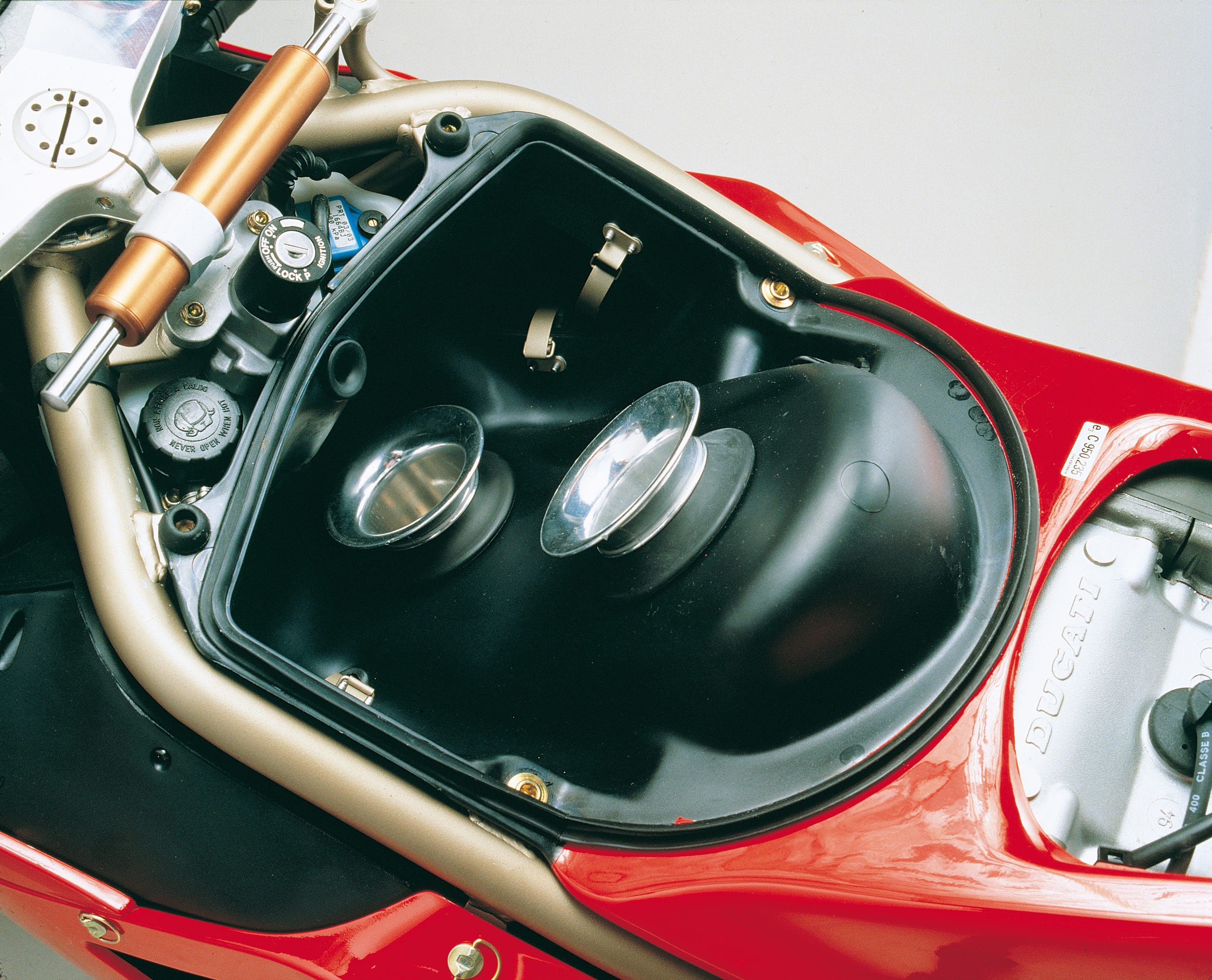
Another
important
consideration in the design was a reduction in frontal
area and an
improvement in aerodynamics over the 851/888. This led
to the small overall
size of the motorcycle, and the shape of the fairing,
fuel tank, and seat. From
above the shape was intentionally designed to emulate
the curves of a woman.
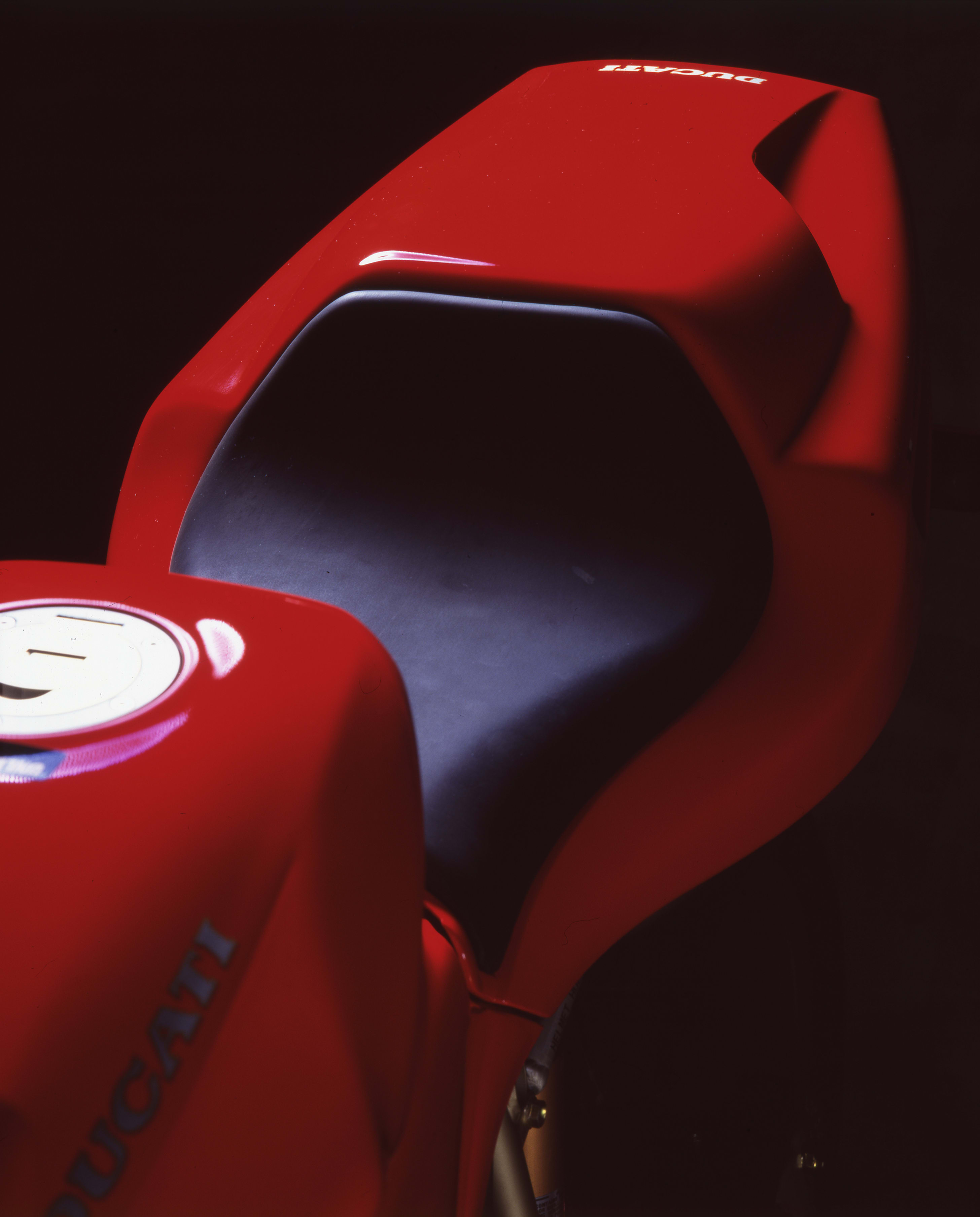
Part
of
the Tamburini philosophy was to feature individually
designed components for
every part of the motorcycle, even the fasteners were
not shared with the
earlier 888. The front 43mm Showa triple clamps were
machined in pairs, the
chill-cast lower triple clamp notable for its
exceptional depth. In the early
1990s Ducati still dreamed of winning the both the
Suzuka Eight-hour race and
the Bol d’Or, so the 916 was designed with a
single-sided swingarm to allow for
rapid wheel changes.
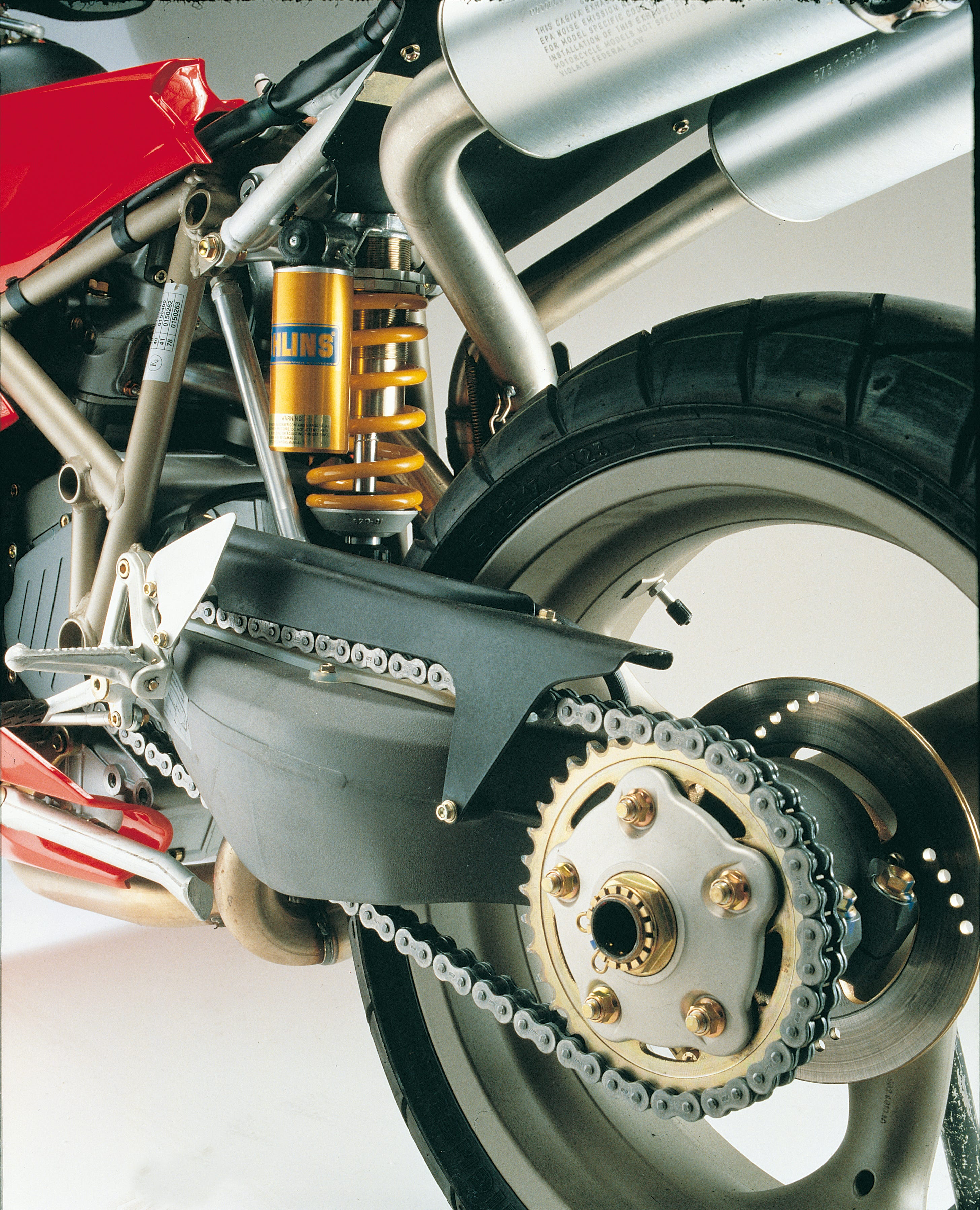
The
first 916 produced only 114 horsepower at 9000rpm but
sheer power wasn’t what
the 916 was about. Although capable of 260km/h, there
were faster and more
powerful motorcycles available. The 916 offered more
than engine performance,
providing a balance between the engine and chassis that
set new standards.
Unlike most earlier Ducatis there was a homogeneity
about the design that took
the 916 to another dimension.
But
while
the 916 was ready for production by the end of 1993,
Ducati was still
owned by Cagiva and they were always teetering between
staying afloat or
sinking. Cagiva was based in Varese near Milan and I
would always visit Varese
on my trips to Italy. I got to know the press man Luigi
Giacometti very well,
and also the boss Gianfranco Castiglioni. The factory at
Varese back then was
still a relic of the Aermacchi days and basically a
series of converted
aircraft hangers on the shore of Lake Schiranna. Somehow
they still managed to
assemble a range of Cagivas, including the
Ducati-powered Elefant.
On
a
trip to Bologna in September 1994 I found Borgo Panigale
is disarray. A fire
in the paint shop some months earlier had virtually
closed the Ducati factory
and all 916 production had moved to Varese. Borgo
Panigale was still producing
the engines but that was it. Ducati’s press lady Silvia
Frangipane suggested I
travel to Varese to check it out. On arrival I found
nothing had really
changed. It was still only an assembly line, and much
more rudimentary than at
Borgo Panigale. Boxes of parts were strewn around
without the organisation
evident in Bologna, but they still managed to
manufacture 3196 916s of various
types.
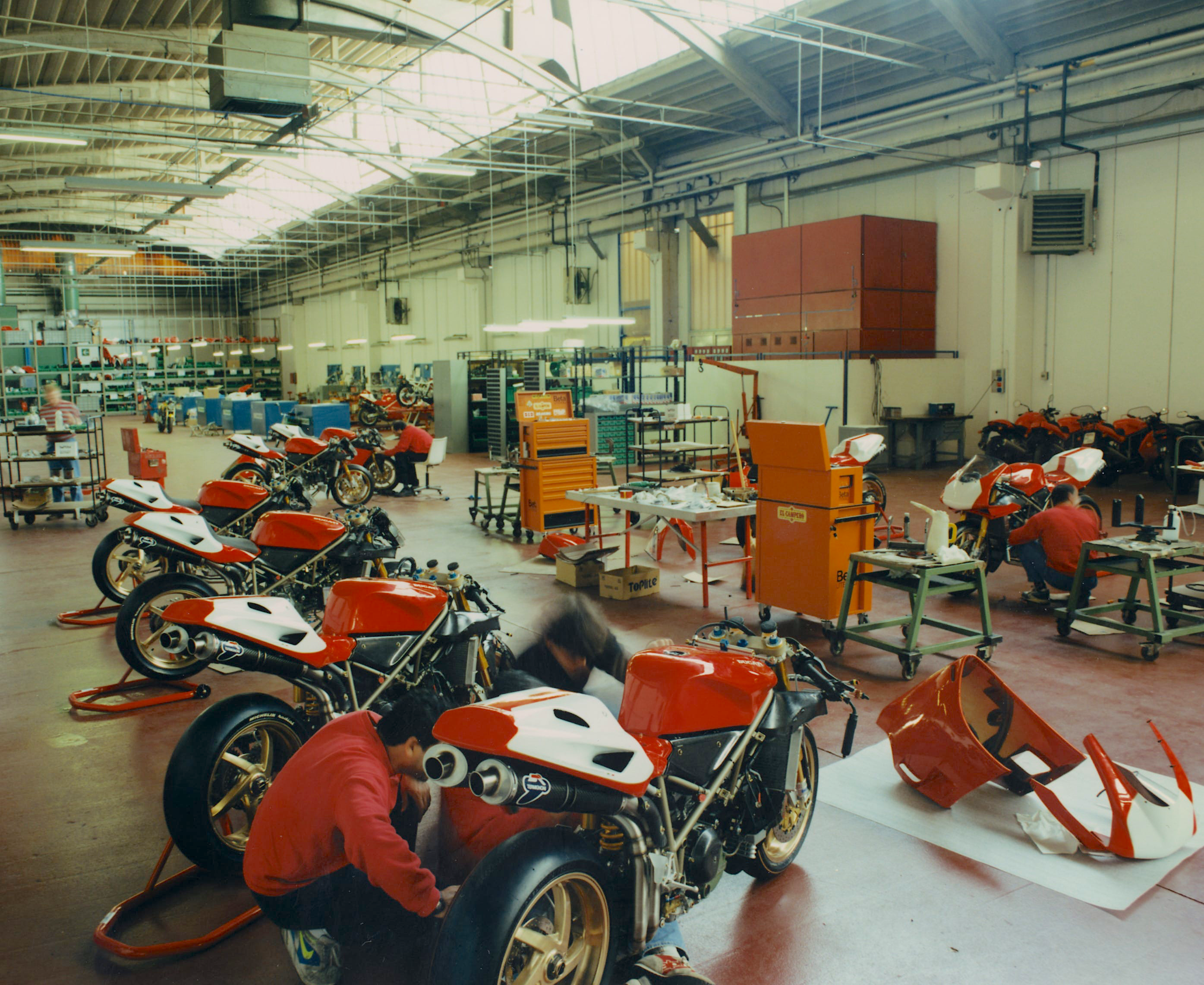
Today
there
is a certain folklore surrounding these “Varese” 916s,
and much of it is
probably concentrated on the variability of
specification due to the staggered
delivery and haphazard storage of components. Unlike
Borgo Panigale which was
still a manufacturing facility, the Cagiva factory at
Schiranna was only an
assembly works, and a remarkably disorganised one. And
with Cagiva always
struggling to pay suppliers often the supply components
would dry up. Whether
there was any difference in assembly quality between the
two locations it is
hard to say but certainly the engines were the same
specification as they were
still built in Borgo Panigale.
What
the
916 did for Ducati was take the company beyond that of
an enthusiast niche
market manufacturer to that of the creator of a
universally admired and
desirable motorcycle. The 916 went on to become arguably
the greatest Ducati
ever. Providing the class-leading standard for close to
a decade no other
Ducati had such success on the track for such a long
period and remained at the
top of the performance world for so long.
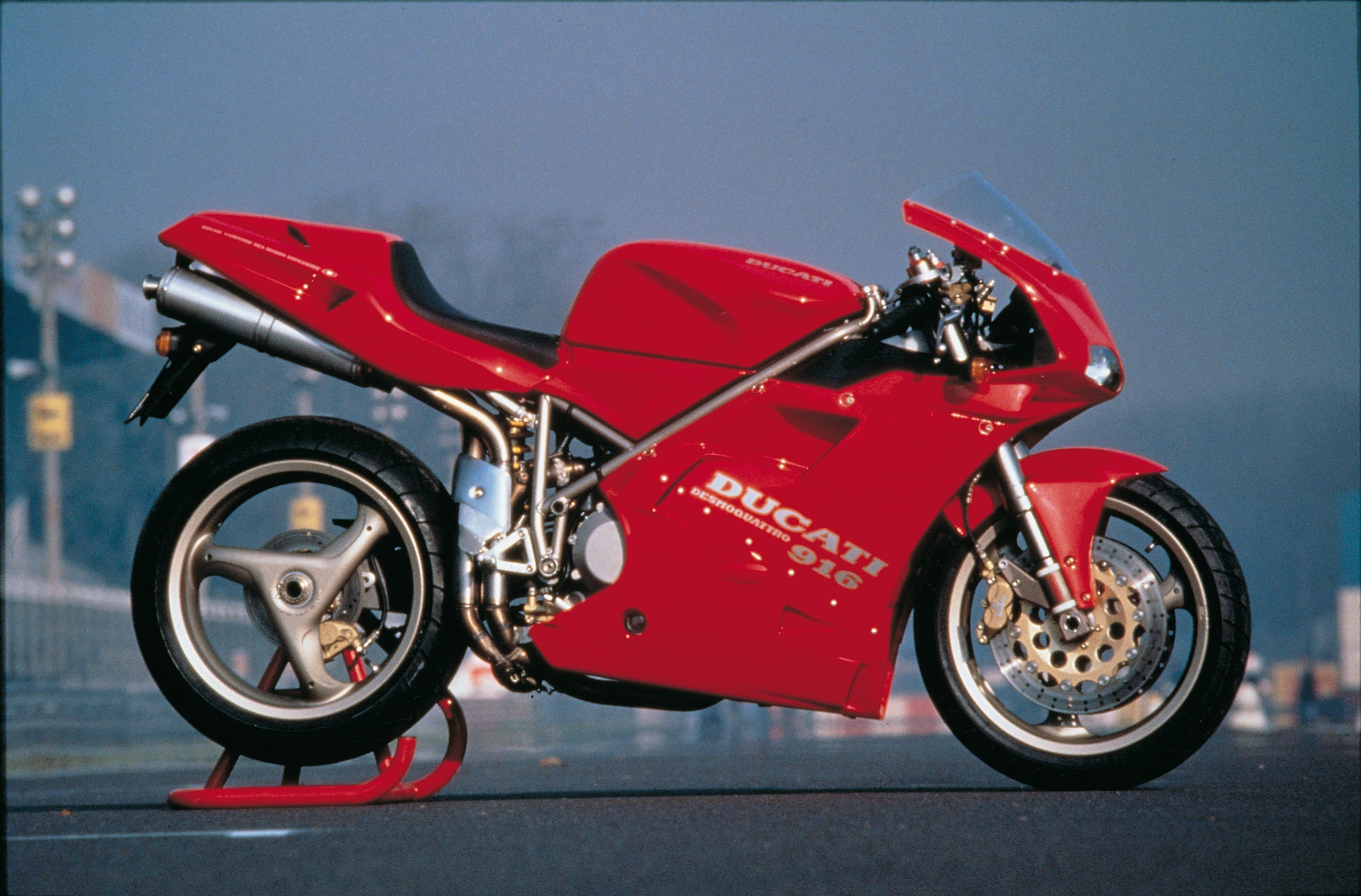
***
Note: this is from Ian's Substack
subscription service – find it here.
-------------------------------------------------
Produced by AllMoto abn 61 400 694 722
Privacy: we do not collect cookies or any other data.

Archives
Contact




